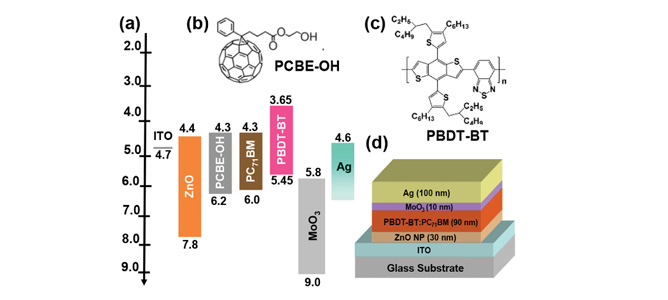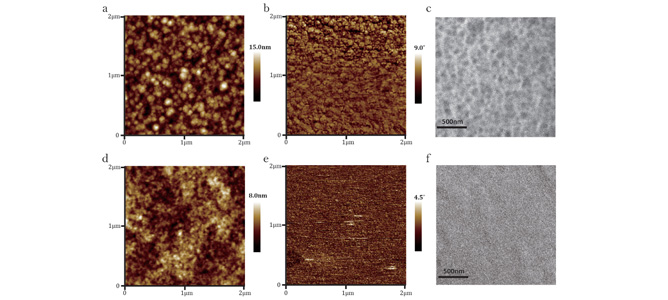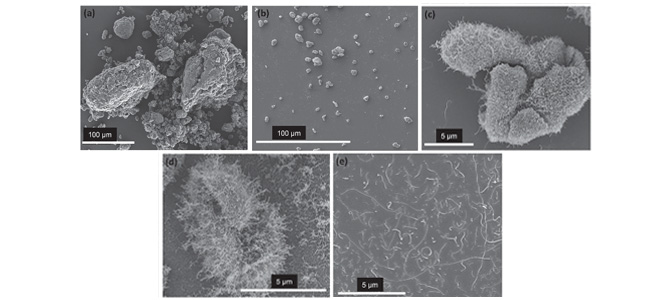Noteworthy publications



Congratulations to Jegadesan Subbiah et al from Bio21 Institute and CSIRO who recently published “Organic Solar Cells Using a High-Molecular-Weight Benzodithiophene–Benzothiadiazole Copolymer with an Efficiency of 9.4%” in Advanced Materials. The paper discusses a high molecular weight donor–acceptor conjugated polymer being synthesised using the Suzuki polycondensation method. Using this polymer, a single-junction bulk-heterojunction solar cell is fabricated to give a power conversion efficiency of 9.4% using a fullerene-modified ZnO interlayer at the cathode contact. (see figure 1)
Congratulations to Wenchao Huang et al from Monash University, the Australian Synchrotron and Tianjin University who recently published “Unravelling the Morphology of High Efficiency Polymer Solar Cells Based on the Donor Polymer PBDTTT-EFT” in Advanced Energy Materials. Looking at the microstructure of the polymer PBDTTT-EFT and how it blends with the fullerene derivative PC71BM, the paper investigates achieving solar conversion efficiencies of over 9%. A combination of synchrotron techniques are employed including surface-sensitive near-edge X-ray absorption fine structure spectroscopy and bulk-sensitive grazing-incidence wide angle X-ray scattering. The effect of the solvent additive 1,8-diiodooctane (DIO) on solar cell efficiency and film microstructure is also investigated. (see figure 2)
Congratulations to Morteza Miansari et al from RMIT University, and Monash University who recently published “Vibration-Induced Deagglomeration and Shear-Induced Alignment of Carbon Nanotubes in Air” in Advanced Functional Materials. The paper discusses Carbon Nanotubes (CNT) which are are widely known to agglomerate into difficult to separate even after suspension in solution. The team report for the first time, a dry and rapid method to deagglomerate bulk, unbound multi-walled carbon nanotube bundles due to surface acoustic waves in a piezoelectric substrate. These nanotubes may then be aligned along the direction of shear provided by sliding a glass cover slip 10 mm across the CNT mat. Uniquely simple, the approach avoids the many shortcomings of other CNT deagglomeration techniques thereby overcoming a key limitation in their use for a diverse range of applications. (see figure 3)


